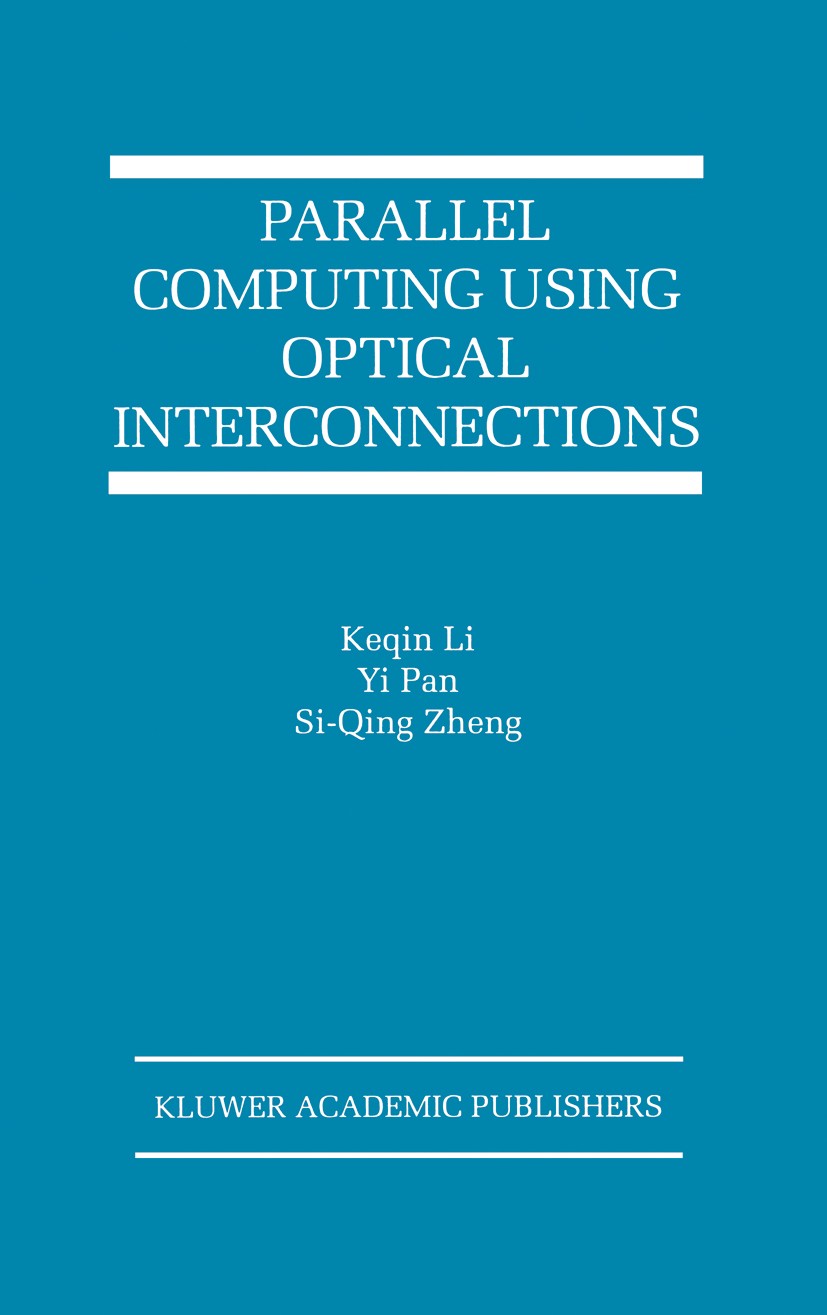| 书目名称 | Parallel Computing Using Optical Interconnections | | 编辑 | Keqin Li,Yi Pan,Si Qing Zheng | | 视频video | http://file.papertrans.cn/741/740953/740953.mp4 | | 丛书名称 | The Springer International Series in Engineering and Computer Science | | 图书封面 |  | | 描述 | Advances in optical technologies have made it possible toimplement optical interconnections in future massively parallelprocessing systems. Photons are non-charged particles, and do notnaturally interact. Consequently, there are many desirablecharacteristics of optical interconnects, e.g. high speed (speed oflight), increased fanout, high bandwidth, high reliability, longerinterconnection lengths, low power requirements, and immunity to EMIwith reduced crosstalk. Optics can utilize free-space interconnects aswell as guided wave technology, neither of which has the problems ofVLSI technology mentioned above. Optical interconnections can be builtat various levels, providing chip-to-chip, module-to-module,board-to-board, and node-to-node communications. .Massively parallel processing using optical interconnections poses newchallenges; new system configurations need to be designed, schedulingand data communication schemes based on new resource metrics need tobe investigated, algorithms for a wide variety of applications need tobe developed under the novel computation models that opticalinterconnections permit, and so on. ..Parallel Computing Using Optical Interconnections. is acollecti | | 出版日期 | Book 1998 | | 关键词 | Processing; Scala; Scheduling; VLSI; algorithms; communication; development; requirements | | 版次 | 1 | | doi | https://doi.org/10.1007/b102253 | | isbn_softcover | 978-1-4757-7117-6 | | isbn_ebook | 978-0-585-27268-9Series ISSN 0893-3405 | | issn_series | 0893-3405 | | copyright | Springer Science+Business Media New York 1998 |
The information of publication is updating

|
|
 |Archiver|手机版|小黑屋|
派博传思国际
( 京公网安备110108008328)
GMT+8, 2025-9-21 20:16
|Archiver|手机版|小黑屋|
派博传思国际
( 京公网安备110108008328)
GMT+8, 2025-9-21 20:16


